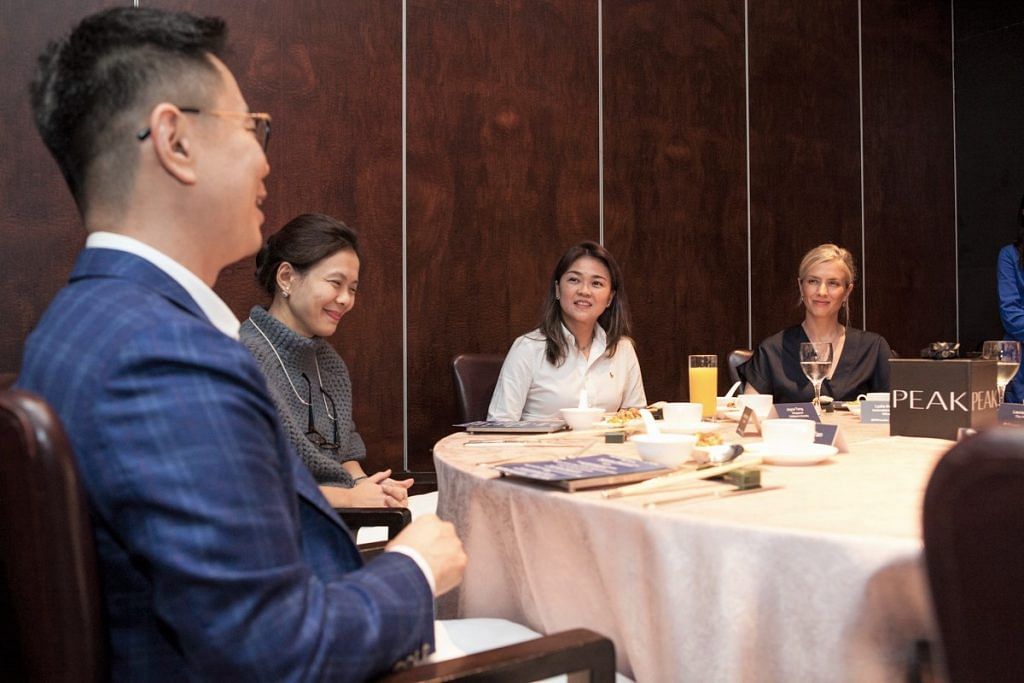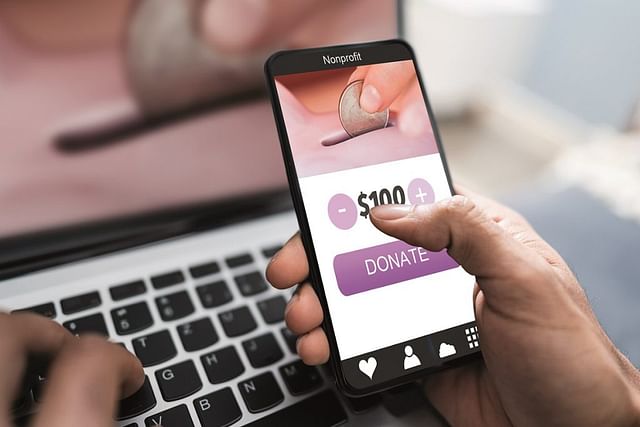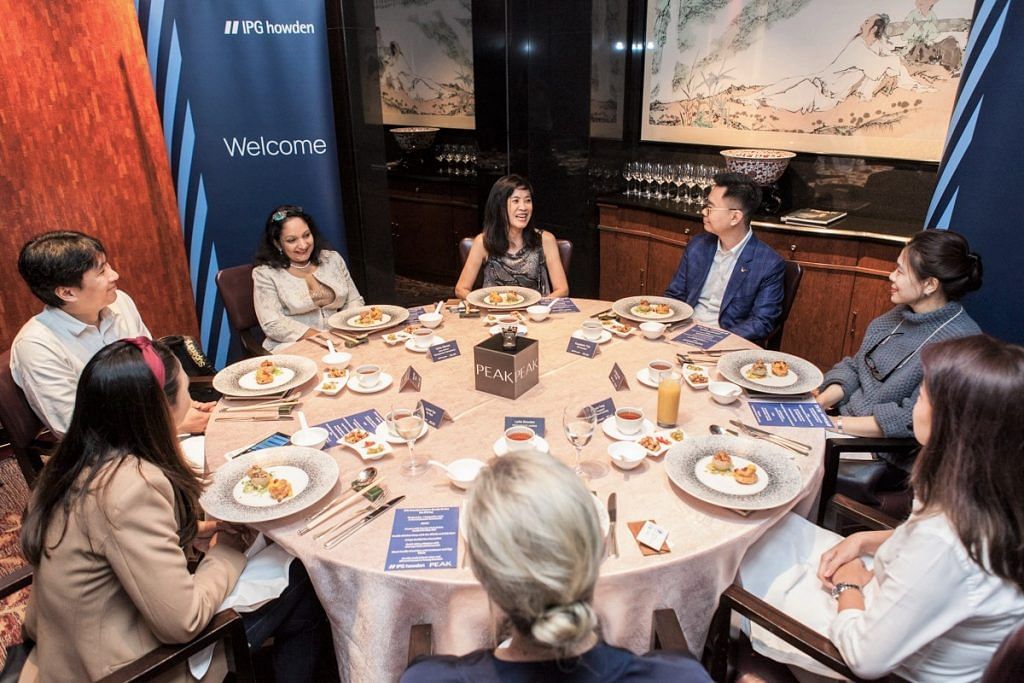Philanthropy with a purpose: How personal giving can create a positive impact
Published
Read time
In the last of four round-table discussions hosted by global insurance broker Howden Private Wealth and The Peak, wealth advisors and civil society leaders examined ways to approach philanthropy with greater, more purposeful impact.
What would you do with $1 billion to address one or many daunting social issues? Founder and co-founder of crowdfunding platform GIVE.asia Yu Ming Pong answered: “I’d invest the billion in getting a billion people to start their own giving journeys with $1. It would ensure that we multiply the impact by sparking a giving movement that propagates and generates social momentum.”
“At GIVE.asia, we dream of a world where everyone helps everyone, and each of us plays our part as a giver,” he added, when asked the question at the recent Howden Private Wealth Future-Ready session on philanthropic giving, held to coincide with International Legacy Giving Day (Sept 13).
On the other hand, non-profit management consultant Usha Menon would use the windfall to tackle one specific issue by effectively addressing its root cause. “Investors always ask how much is needed to maximise their return on investment (ROI). Yet, when addressing the needs in our communities, donors typically ask non-profits not to use their donations for research, staffing, training or office automation — all of which are important expenses. If I had a billion, I would focus on the return on impact instead of instructing charities on how to do their job.”

In her 30-year career in the social purpose sector with decade-long stints at Community Chest and Habitat for Humanity, Menon has seen corporate and individual giving rise across Asia. A decade ago, she would have neatly categorised generosity into ABCD — A: Altruistic giver, B: Business-minded giver, C: Community-focused philanthropist, and D: Daring entrepreneur, who develops novel ways of addressing social problems. At the session, she bought up the emerging G: Generation Generosity with a renewed optimism.
“Despite their access to material comforts and exposure to consumerism, many are very community-minded and genuinely compassionate, and want to make an impact on people, policies and the planet,” she shared at the table.
The Rewards of Giving
“Giving benefits oneself and society in every sense of the word. If a person settles in his or her heart that giving is vital for their own good, that it is good for one’s flesh and blood, and the society they live in, then giving will become the most natural extension of their growth,” said co-host Freaderic Tan, a Senior Vice President at Howden Private Wealth, whose mission is to assist clients in realising and achieving their giving goals.
He was echoed by Lee Syin Long, managing director of an international wealth management outfit that assists HNW families with wealth management and succession planning: “The universal truth is that, rich or poor, we all give — be it our time, our money, or our talents — because this gives us hope and the opportunity to fulfil a simple desire to love and reconnect with humanity.”
An international private client lawyer by training, Long related how one client was able to re-establish ties with his estranged children after discussing giving his wealth to charity. “I was concerned that we were going to have to deal with potentially unhappy heirs challenging the estate, but on the day of the meeting, his children were not only supportive of their father’s giving but genuinely excited to get involved,” she shared. “Exploring the topic of giving back gave them a chance to discover what was meaningful to each of them.”
There’s a lot of potential for philanthropy, and a lot of potential for philanthropists to make a difference - Theresa Cheong
“The legacy giver is one who has resolved the issue to give in his or her heart and mind, and is resolute to do so,” Tan of Howden Private Wealth added. “The next step of their journey is to formalise their legacy of giving through the writing of a will, or setting up a Donor Advisory Fund (DAF), or making financial plans to enhance their giving. A safe and assured way to create more to give is through utilising a multiplication tool like life insurance.”
The Community Foundation of Singapore (CFS) has cause-neutral philanthropy advisors that can help those who wish to formalise their personal giving navigate the complex charity landscape for sustained impact, according to the CFS Head of Partnerships Theresa Cheong. A former banker and CFA who joined CFS in mid-2019, she likened the foundation’s role to that of a wealth advisor — “only this time it’s in structuring the donor’s giving portfolio vis-a-vis financial portfolios.”
“Through our partnerships with government agencies and the social sector, we’re also in touch with the needs on the ground. Our grant making experts leverage this knowledge to identify and recommend key opportunities where donors can make a valuable difference,” continued Cheong.
A recent survey conducted by the CFS and the National Volunteer & Philanthropy Centre (NVPC) revealed that more than one in two respondents supported legacy giving and the difference it could make to the community and future generations.
Related: The future of money: Which alternative assets are worth investing in?

Cause & Purpose
Like Cheong, Joyce Teng made a mid-career switch at the start of the pandemic. Formerly in the maritime sector, she is now Senior Director of Community Engagement & Partnerships and Corporate Communications at the Singapore Children’s Society (SCS). “It has given me first-hand experience of how hard the work is in helping those in need. I have nothing but respect for my practitioner colleagues who help our beneficiaries daily,” she said.
Established in 1952, SCS mirrors the unfolding of the Singapore story. From addressing the care and welfare of the sick and malnourished children of the post-war years to engaging latchkey children during the rapid industrialisation phase of the 1970s and 1980s, it has further evolved to support whole families, ensuring caregivers are empowered to manage current and future challenges so their children can grow and develop in positive environments.
“We are seeing a more conscientious group of donors who care deeply about the causes they give to and are often curious about our programmes and the impact of their donations,” added Teng. “There is also rising awareness for issues such as education and mental health. More and more of the public understand that children and youth have needs beyond just food and shelter, and are open to giving to support such needs.”
Rich or poor, we all give because this gives us hope and the opportunity to fulfil a simple desire to love and reconnect with humanity - Lee Syin Long
The International Justice Mission (IJM), through its Director of Strategic Partnerships Lydia Bowden, is also fighting hard to capture the public’s attention. Its mission is to end modern-day slavery and trafficking. But there are inherent challenges in communicating IJM’s work, admitted Bowden. “It’s because we address problems that are sad and dark sides of humanity that we all wish didn’t exist. But the truth is, an issue like trafficking and online sexual exploitation of young children can only be solved if we collectively work towards solutions.”
However, volunteers who genuinely want to serve will always find a way. “It’s worth remembering that most NGOs and social service organisations are overburdened by emotionally-draining work and don’t always have the capacity to run slick volunteer programmes. But most will be glad to partner with individuals who meet the needs of the organisations or the people they are serving,” she emphasised.
While some may argue that certain causes have an easier time at drawing in donors and advocates than others, “all causes are important and research shows that we all want to give,” said GIVE.asia’s Pong, whose crowdfunding platform, established while he and his co-founders were still in university, has raised $112.9 million for more than 18,500 campaigns from some two million givers since 2012.
“To get more givers involved, we need to reduce the complexity of the issue at hand, making the information accessible, and highlighting the importance each person contributes towards the collective impact that gets us to the goal.”
Related: Educators on empowering today’s students with the skills to flourish in tomorrow’s world

The Future of Giving
Covid-19, the tech divide, an ageing population, climate change and other emerging issues will all intensify demands on Singapore’s charities and non-profits over the next 10 years. “At the same time, we will witness incredible opportunities for growth in philanthropy in Singapore. The largest intergenerational transfer of wealth is on the horizon as baby boomers retire, and there is exponential growth in the number of family offices being set up here as wealth relocates to our shores,” CFS’ Cheong pointed out. “What these trends mean is that there’s a lot of potential for philanthropy, and a lot of potential for philanthropists to make a difference.”
Wealth planning specialist Long is already seeing a rise in family philanthropy, where family capital and philanthropic capital are being managed hand in hand. “The rise in the number of family offices being set up in Singapore over the last few years by families from the region presents a real opportunity for us to develop as a philanthropic hub for the region,” she said. There is also a new generation of philanthropists with a greater appetite to collaborate rather than work alone. “They want to see the impact of their giving and are interested in the theory of change of the organisations they give to.”
Howden Private Wealth Tan concluded the session by suggesting three ways to approach one’s giving: Give now, give later, or do both. “The strategies can vary depending on one’s intentions,” he said. “Let me quote Usha Menon, who said earlier in the session, ‘Give while you are living, not just when you are leaving’.”
This round-table discussion was held at Li Bai Cantonese Restaurant, Sheraton Towers Singapore, which generously donated proceeds to the Singapore Children’s Society, the adopted charity of Howden Private Wealth.
Related: Life beyond 120: Doctors weigh in on leading healthier, longer lives
Preserving Wealth, Protecting Legacies
At Howden Private Wealth, we firmly believe that legacy giving is an important foundation in addressing our communities’ most pressing issues.
While committed to giving back to society, one needs to consider adopting a more sustainable approach to philanthropy with greater lasting impact.
Howden Private Wealth can help individuals and families enhance and multiply their contributions during their lifetime and beyond by using globally-sourced insurance solutions to achieve their philanthropic goals and aspirations in a sustainable manner.
Article by Lauren Tan, Editor-in-Chief, The Peak Magazine